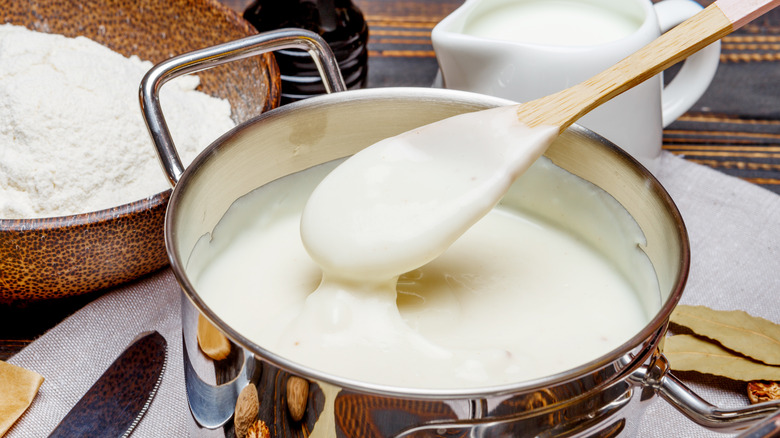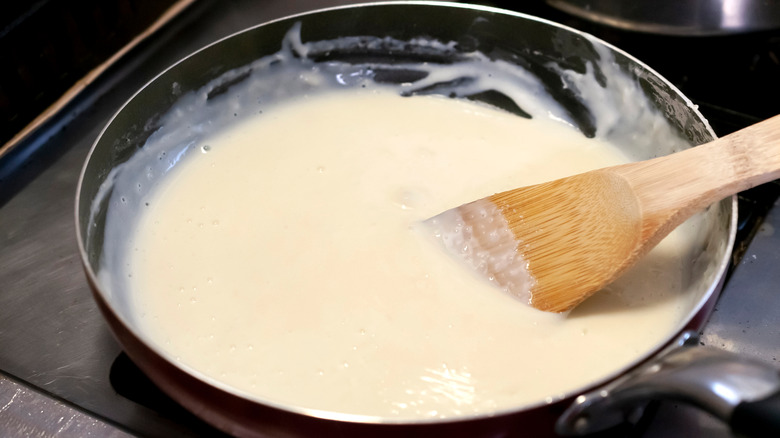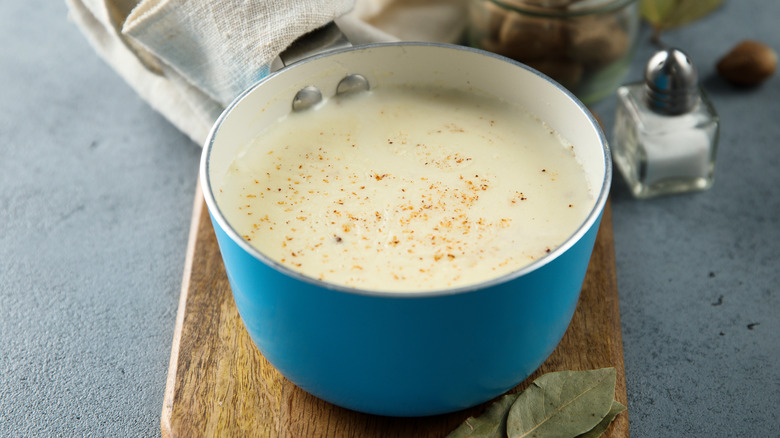For The Perfect Béchamel Sauce, Avoid Direct Heat At All Costs
Even if you're not a professional chef, there's a good chance you've at least tried a tasty béchamel sauce at some point. It's a quintessential white sauce often made with a base of melted butter and flour whisked into milk or cream. The flour thickens in the liquid as the mixture simmers, yielding a supremely velvety texture. Making a perfect béchamel isn't complicated, and the ingredients list is small. Still, it takes finesse to get the silkiest, creamiest results without scorching the bottom. That's because, when it comes to constructing this time-honored sauce correctly, direct heat is your enemy.
Rather than placing your saucepan directly over a flame or induction burner, make your béchamel over indirect heat. Flat-top grills and standalone electric griddles are especially suited for this job because their broad surfaces can heat things uniformly, which allows for greater control over what's happening in the pot.
Griddles produce a steady, indirect heat
In your home kitchen, the griddle is one of the best sources of indirect heat available. While the cooktop is warmed from underneath, that heat gets dispersed across the flat surface efficiently. Using a griddle to heat your saucepan is a gentler way of cooking béchamel.
After the fat and flour have been made into a roux and the liquid has been whisked into the pot, the trickiest part of making béchamel is getting all of the sauce heated up to gelatinization temperature at the same time. Gelatinization occurs when the starch molecules in the flour absorb the liquid, swell, and then explode, which makes the sauce thick. Unlike water, which needs to reach 212 degrees Fahrenheit to boil, béchamel will gelatinize at around 124- to 140 degrees Fahrenheit, so you don't need much heat to achieve the perfect sauce. In fact, the lower the heat, the better — otherwise, the sauce on the bottom of the pot will cook first while the top still needs to come up to temperature.
Tips for improving this classic sauce
For the perfect béchamel, you'll want to whisk the sauce consistently. This will scrape away the hottest cooked layer that forms at the bottom of the pot and mix it with the rest of the sauce. If you were to cook your béchamel over high, direct heat, it would be near impossible to do this fast enough before it started to stick and smoke, which is why the griddle's steadier heat is vital.
Béchamel is considered one of the five French "mother" sauces, and it's used in all kinds of dishes — from homemade macaroni and cheese to soufflés. Its origins are thought to date back as far as the 17th century when it was served to France's King Louis XIV, and it hasn't changed all that much over the centuries. Many professional chefs likely have the ratio of equal parts fat to flour plus 10 parts milk committed to memory, but if you're not a culinary ratio person, keep in mind that 1½ ounces each of butter and flour will always thicken about a pint of milk or cream. Just make sure to go slow over low heat. Once the mixture starts to bubble and coats the back of a wooden spoon, your perfect béchamel sauce is ready.


